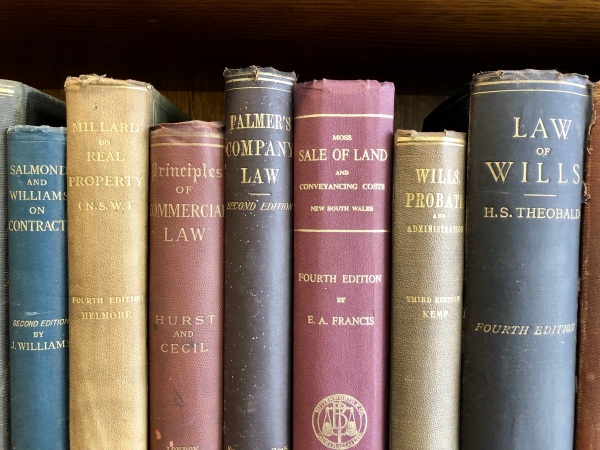
In the 1500s, debtors in England would avoid paying their debts by transferring property to friends or family as a gift or for undervalue, move to a sanctuary such as church land, wait for their creditors to exhaust their efforts or come to a favourable settlement of the debt, and then return and take a re-transfer of the property. This was a fraud on the creditors.
To prevent this mischief, in 1571, Parliament enacted the Fraudulent Conveyances Act (13 Eliz I, c 5), known as the Statute of 13 Elizabeth, and in Australia, as the Elizabethan Statute. It provided:
feoffments, gifts, grants etc [that] have been and are devised and contrived of malice, fraud, covin, collusion or guile to the end, purpose and intent to delay, hinder or defraud creditors and others … [are] to be clearly and utterly void
The Act changed the law but not human nature. The latest in a long line of cases which have applied the Statute of 13 Elizabeth to void fraudulent property transfers is the decision of Commissioner of Taxation v Parr [2022] FCA 156 (28 February 2022) (Banks-Smith J).
The Federal Court of Australia applied the modern manifestation of the statute, s 89 of the Property Law Act 1969 (WA), to enable the Commissioner of Taxation to recover a taxation debt against two properties the tax debtor (Ronald Parr) had transferred as gifts, the first to his wife, the second to his two sons, to avoid paying a taxation debt.
The factual background
On 21 July 2016, the Australian Taxation Office (ATO) sent the tax debtor a letter advising him of its intention to conduct a tax audit of undisclosed income, sources of funds used to purchase properties, capital gains, and unsubstantiated expense claims for the income years ending 30 June 2009 to 30 June 2014.
The tax debtor provided certain documents and explanations including that the cash funds in question were financial gifts or loans received from friends and businesses, not taxable income. The tax debtor relied mainly on oral promises and explanations.
On 15 February 2017, two ATO officers recorded an informal interview with the tax debtor. As a result, they identified significant income in the 2010 income year for which no income tax return had been lodged, rental property deductions for a property sold before the years the expenses were claimed, a capital gain from the sale of a property not declared and large amounts of cash deposited in bank accounts which were not declared as income.
On 17 February 2017, the tax debtor transferred a property at 58A Broun Avenue, Embleton, to the tax debtor’s wife, and at 58 Broun Avenue to the tax debtor’s two sons, as a ‘gift of love’ with no money paid.
On 6 April 2017, the ATO issued tax assessments giving effect to the outcome of the audit.
On 18 September 2018 the tax assessments were entered as a judgment in the amount of $2,149,411.03 (the tax debt).
The Law
Section 89 of Property Law Act 1969 (WA) provides as follows:
Voluntary conveyances to defraud creditors voidable
(1) … every alienation of property made … with intent to defraud creditors is voidable, at the instance of any person thereby prejudiced.”
The leading Australian decision is Marcolongo v Chen [2011] HCA 3 in which the Hgh Curt of Australia considered section 37A of the Conveyancing Act 1919 (NSW), which is substantially identical to s 89. There are equivalent provisions to ss 37A and 89 in all Australian States and Territories, New Zealand and the United Kingdom.
The principles considered in Marcolongo were summarised by the Full Federal Court in Zreika v Royal [2019] FCAFC 82 (as quoted in Parr):
Section 37A refers to an intent to defraud creditors and means delay, hinder or [otherwise] defraud creditors as the Elizabethan Statute had provided (at [19]). Whether there is an intent to defraud creditors involves a question of fact concerning actual knowledge … it is not necessary to prove a desire to cheat or swindle those prejudiced; … it is not necessary to show that the debtor wanted creditors to suffer a loss or that the debtor had a purpose of causing loss (at [32]). Finally, it is not necessary that the intent to defraud creditors be the sole or predominant intention (at [57]).
In Parr, the Court found:
- An actual intent to defraud creditors can be inferred from the time the tax audit letter was received in 2016, the correspondence between the tax debtor’s accountants and the ATO and was obvious by at least 15 February 2017 at the interview with the ATO.
- The proximity of the audit and the interview to the transfers (which were made 2 days after the interview) were additional factors in demonstrating intent.
- The lack of evidence to support the tax debtor’s explanation that he had promised to transfer the properties for some time for other reasons, the lack of expenditure upon the properties by the transferees to establish a beneficial interest in the properties, were relevant. The Court said that even if other reasons were demonstrated for the transfers, so long as there was an intent to defraud, the Statute would be satisfied.
In summary:
The alienation of Ronald’s property was made voluntarily, for no more than nominal consideration of the 'gift of love', to family members, and proximate in time to the ATO communications and interview that highlighted Ronald's taxation liabilities, even though the exact amount of the liability was not then known. [judgment, paragraph 80]
Note: the good faith defence i.e. that the transfer was made for valuable consideration and in good faith, was not raised by the transferees in this case.
Conclusion:
The Court made declarations to the effect that the transfers were void under s 89 because the alienation of the properties was made with intent to defraud. The ATO will be able to sell the properties and apply the proceeds of sale against the tax debt.
